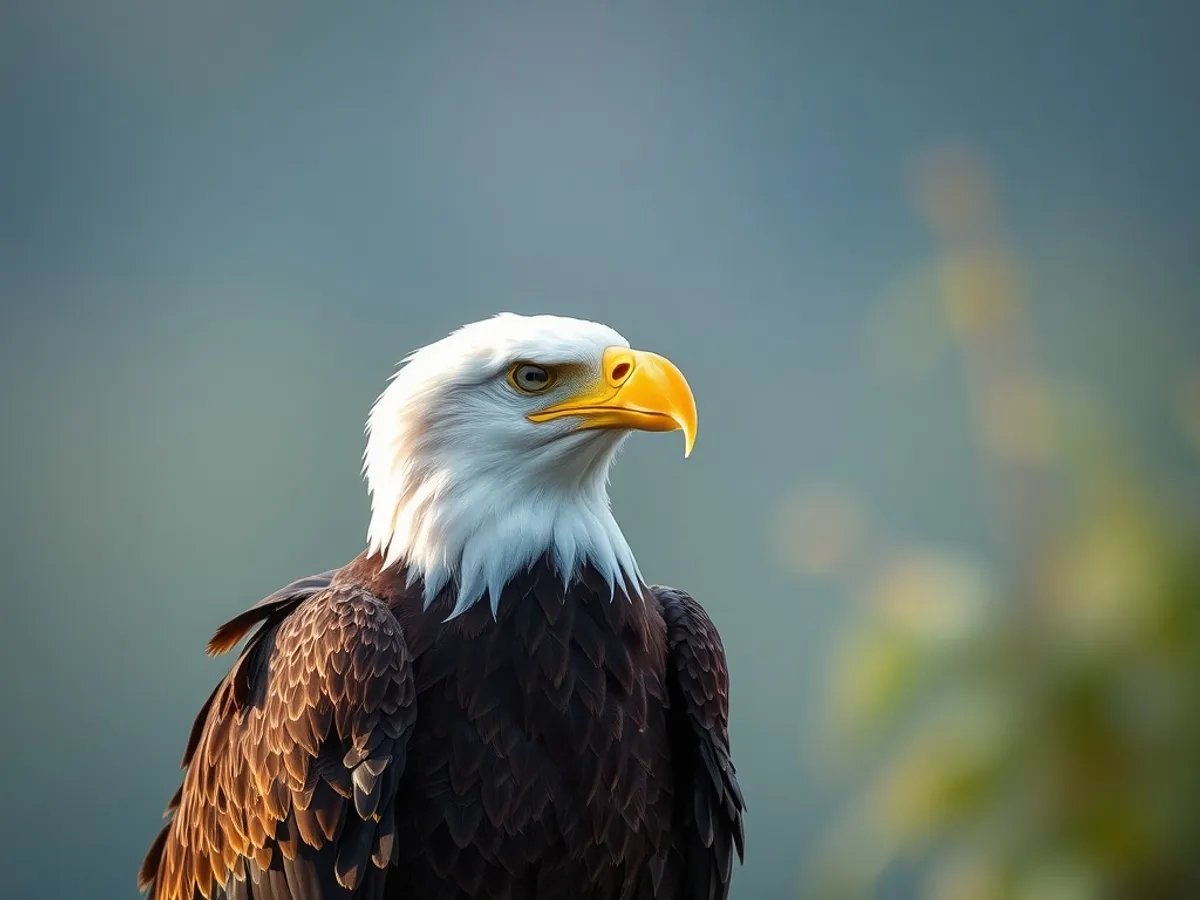
Bald Eagle
Haliaeetus leucocephalus
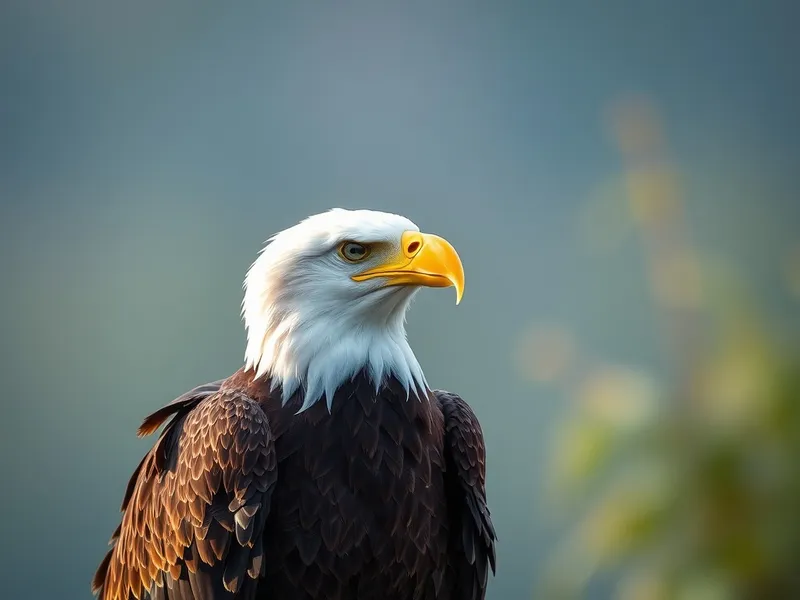
Meet the Bald Eagle
The Bald Eagle is a large bird of prey native to North America, easily recognized by its white head and tail contrasting with a dark brown body and wings. As the national bird and symbol of the United States, it inhabits a variety of landscapes near large bodies of open water, where it can hunt for fish, its primary food source. Bald Eagles are known for their impressive wingspan, keen eyesight, and powerful talons. They build massive nests, called aeries, high in trees or on cliffs, using them year after year with ongoing additions.
Classification
Bird
Habitat
Near large lakes, rivers, reservoirs, and coastal habitats
Diet
Carnivore
Lifespan
20-30 years in the wild
Conservation
Least Concern
Weight
3–6.3 kg (6.6–13.9 lbs)
📖Fascinating Facts
Impressive Wingspan
Bald Eagles have a wingspan of up to 2.3 meters (7.5 feet), making them one of the largest raptors in North America.
Fish Specialists
Their diet consists largely of fish, which they snatch from the water with powerful talons after spotting them with their exceptional eyesight.
Huge Nests
Bald Eagles build enormous nests called aeries, often reused and enlarged each year, with some weighing over a ton.
📋Detailed Description
The Bald Eagle (Haliaeetus leucocephalus) is a large raptor, with adults typically measuring 70–102 cm (28–40 in) in body length and boasting an impressive wingspan of 1.8–2.3 m (5.9–7.5 ft). Males generally weigh between 3–4 kg (6.6–8.8 lb), while females, which are notably larger, can reach up to 6.3 kg (13.9 lb). Its iconic plumage features a stark white head and tail contrasting sharply with a dark brown body and wings, and a large, hooked yellow beak adapted for tearing flesh. Juveniles are mostly brown with mottled white until they reach maturity at 4–5 years. The Bald Eagle's eyes are large and forward-facing, providing exceptional binocular vision crucial for spotting prey from great distances. This species is highly territorial, especially during the breeding season, and is known for constructing some of the largest nests of any North American bird—often over 2.5 m (8 ft) deep and weighing up to a metric ton after years of reuse and additions. Bald Eagles are primarily piscivorous but are opportunistic feeders, consuming waterfowl, small mammals, and carrion when fish are scarce. They are powerful fliers, capable of soaring for hours on thermal updrafts, and are adept at both hunting live prey and scavenging. Their strong, unfeathered legs and sharp talons are specialized for grasping slippery fish. Socially, they are mostly solitary or found in pairs, but may congregate in large numbers at abundant food sources, especially during winter.
💡 Did you know?
Bald Eagles were once endangered in the contiguous United States, but thanks to conservation efforts, their populations have rebounded dramatically.
🔬Research & Sources
Wikipedia Summary
The bald eagle is a bird of prey found in North America. A sea eagle, it has two known subspecies and forms a species pair with the white-tailed eagle, which occupies the same niche as the bald eagle in the Palearctic. Its range includes most of Canada and Alaska, all of the contiguous United States, and northern Mexico. It is found near large bodies of open water with an abundant food supply and old-growth trees for nesting.
Last Modified: 6/3/2025
🎭Behavior & Social Structure
Bald Eagles are diurnal, with peak activity during early morning and late afternoon. They hunt primarily by perching and scanning for prey or by soaring over water bodies. Their hunting technique often involves swooping down to snatch fish from the water's surface with their talons, rarely submerging more than their feet. They are known for kleptoparasitism, frequently stealing food from other birds such as ospreys. Social interactions are generally limited outside the breeding season, but communal roosting is observed in winter, especially in areas with abundant food. Territorial displays include aerial acrobatics, vocalizations, and aggressive chases. Vocalizations are high-pitched, chirping whistles, not the deep screeches often depicted in media. Daily routines involve alternating periods of hunting, preening, and resting, with significant time spent maintaining their nests during the breeding season.
👶Reproduction & Life Cycle
Bald Eagles form monogamous pairs, often mating for life. Courtship includes dramatic aerial displays, such as cartwheel flights where the pair locks talons and spirals downward. Nest building or refurbishment begins in late winter, with both sexes contributing. The female typically lays 1–3 eggs per clutch, with incubation lasting 34–36 days. Both parents share incubation and feeding duties, but the female does the majority of brooding. Chicks hatch asynchronously and are semi-altricial, covered in down and dependent on parental care. Fledging occurs at 10–12 weeks, but juveniles may remain near the nest and continue to be fed by parents for several weeks post-fledging. Breeding success is closely tied to food availability and disturbance levels.
🛡️Adaptations & Survival
The Bald Eagle's large, hooked beak and powerful talons are evolutionary adaptations for capturing and consuming fish and other prey. Their feet have rough, spiculate pads (spicules) that help grip slippery fish. Exceptional eyesight—estimated to be 4–5 times sharper than that of humans—enables them to spot prey from over a kilometer away. Their broad wings and lightweight skeleton facilitate soaring and gliding, conserving energy during long flights. Behavioral flexibility allows them to exploit a wide range of food sources, including carrion and prey stolen from other birds. Seasonal movements are influenced by food supply and water availability, with northern populations migrating south in winter to avoid frozen water bodies.
🎨Cultural Significance
The Bald Eagle holds profound cultural and symbolic significance, especially in the United States, where it has been the national emblem since 1782. It represents strength, freedom, and resilience, appearing on official seals, currency, and military insignia. For many Indigenous peoples of North America, the Bald Eagle is a sacred messenger and a symbol of spiritual power, with feathers used in ceremonies and regalia. Its recovery is often cited as a major conservation success story, reinforcing its status as a symbol of environmental stewardship.
🔬Recent Research & Discoveries
Recent research has focused on the genetic diversity of Bald Eagle populations, revealing high gene flow across North America but some regional structuring. Studies on contaminant exposure continue, with lead poisoning identified as a significant mortality factor in some regions. Satellite telemetry and banding programs have provided detailed insights into migration routes, wintering grounds, and habitat use. Ongoing studies are examining the impacts of climate change on breeding phenology and prey availability. Additionally, research into avian influenza and other emerging diseases is increasingly relevant for population health monitoring.
🎥Wildlife Videos

Eagles: The Kings of the Sky | Free Documentary Nature
Eagles: The Kings of the Sky | Free Wildlife Documentary Watch: "The Golden Eagle: King of the Mountains" here: ...
Free Documentary - Nature
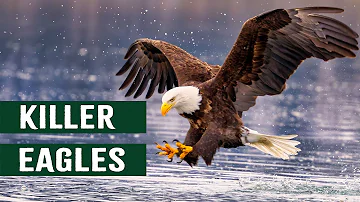
Wings Of Death: The Most Powerful Apex Predator Of The Skies | Eagles Hunting In Action
Discover the incredible journey of the white-tailed sea eagle, one of the largest and most majestic birds of prey. From its early ...
Apex Predators
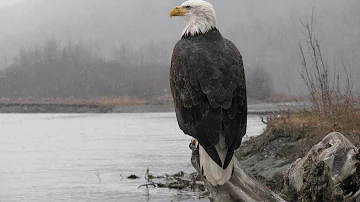
American Eagle (Nature Documentary)
Epicnature

The Golden Eagle - Master of the Sky | Free Documentary Nature
The Golden Eagle - Master of the Sky | Wildlife Documentary Watch 'Germany's Wild Birds' here: https://youtu.be/RpgWh3udd-A ...
Free Documentary - Nature
![Eagle Documentary - American Eagle [ National Geographic Documentary 2020 HD ]](https://i.ytimg.com/vi/DAAZeAfIDxk/hq720.jpg?sqp=-oaymwEcCOgCEMoBSFXyq4qpAw4IARUAAIhCGAFwAcABBg==&rs=AOn4CLBifG-Tw5C78ciMrvVZUyIsUfxU8A)
Eagle Documentary - American Eagle [ National Geographic Documentary 2020 HD ]
Eagle Documentary - American Eagle [ National Geographic Documentary HD ] #wildplanet #eagle #natgeodocumentary.
Wild Planet
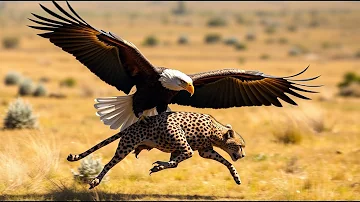
Bald Eagle Hunts Cheetah: Ultimate Wildlife Encounter in 4K UHD 🦅🌍 (AI Documentary 2025) #wildlife
Experience the grandeur of wildlife like never before in stunning 4K Ultra HD! Watch as a majestic bald eagle soars through the ...
WildSerenity
🌍Habitat Information
The Bald Eagle typically inhabits Near large lakes, rivers, reservoirs, and coastal habitats environments. Bald Eagles have adapted to their environments with specialized features and behaviors.
Primary Habitat:
Near large lakes, rivers, reservoirs, and coastal habitats
More detailed habitat information will be available soon.
🛡️Conservation Status
The Bald Eagle is currently classified as Least Concern. Conservation efforts are crucial for preserving this species for future generations.
Common Threats:
- 🏠Habitat loss and fragmentation
- 🌡️Climate change impacts
- 🎯Hunting and poaching
- 🏭Human-wildlife conflict
⚠️Threats & Conservation Challenges
Historically, Bald Eagles faced severe population declines due to habitat destruction, illegal shooting, and especially the widespread use of the pesticide DDT, which caused eggshell thinning and reproductive failure. Since the banning of DDT in the United States in 1972 and active conservation measures, populations have rebounded significantly, leading to their removal from the U.S. Endangered Species List in 2007. Current threats include lead poisoning from ingesting spent ammunition, collisions with vehicles and power lines, habitat loss from development, and human disturbance at nesting sites. Climate change poses emerging risks by altering prey availability and nesting habitats. While the species is classified as Least Concern globally, localized declines and persistent threats require ongoing monitoring.
🔬Scientific Classification
Scientific Name
Haliaeetus leucocephalus
Classification Hierarchy
🔍 About Taxonomic Classification
Taxonomic classification is a hierarchical system used by scientists to classify and organize living organisms based on shared characteristics and evolutionary relationships.
The system moves from broad categories (Kingdom) to increasingly specific ones, with each animal's scientific name typically consisting of its Genus and species.
📝Community Notes
Share your observations and insights about the Bald Eagle with our community of wildlife enthusiasts.
Join Our Community
Sign in to share your observations and connect with fellow wildlife enthusiasts.
Sign In to ContributeNo community notes yet
Be the first to share your observations about the Bald Eagle!
Explore Bald Eagle
Select a tab above to learn more about this amazing animal.
📸Photo Gallery
No photos available for this animal yet.
🌟Discover More Wildlife
Continue your journey of discovery with more fascinating animals from our database
